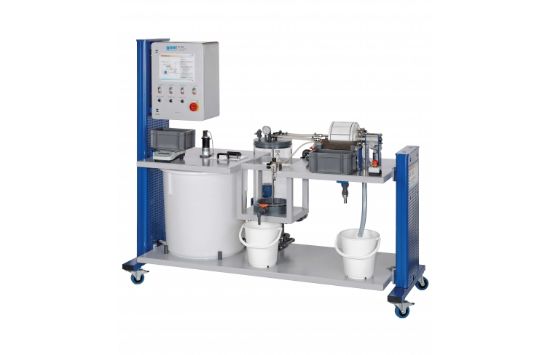Drum cell filters can be used to separate solids continuously from suspensions.
The suspension unit produces a suspension of diatomite and water. A pump conveys the suspension into the suspension tank of the drum cell filter. A stirrer keeps the solid particles in the suspension suspended. Part of the rotating drum dips into the suspension. The jacket of the drum is perforated and covered over with a filter cloth. The drum is divided into cells. Each cell is joined by a hollow shaft to a vacuum line.
The vacuum sucks filtrate through the filter cloth into the drum. From there it is carried in a collector tank which is under vacuum. The solid is separated off at the filter cloth. Consequently, a filter cake which steadily grows in the direction of rotation is created on the immersed part of the drum.
When the filter cake is drawn out of the suspension by the rotating motion, it is drained of water by the applied vacuum. A scraper scrapes the filter cake off of the drum before the drum dips back into the suspension. Compressed air can also be used to remove the filter cake. The filter cake drops into a collector tank.
The flow rate of the supplied suspension is adjusted on the suspension unit. The level in the suspension tank of the drum cell filter can be adjusted by way of an adjustable overflow. The applied negative pressure is indicated by a manometer on the vacuum tank. The rotation speed of the drum is infinitely variable.
Compressed air and vacuum connections are required to operate the trainer.

